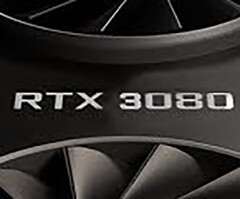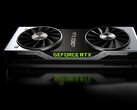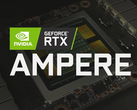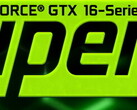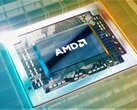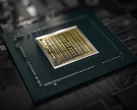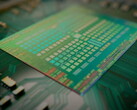Nvidia is expected to launch its next gen gaming GPUs codenamed Ampere in the first half of 2020, and all that is known for sure at this moment is that the GeForce RTX architecture will finally make the jump to 7 nm. While the green team usually imposes tight NDAs on AIB partner meetings, undisclosed WCCFTech sources attending such an event decided to come forth with major leaks regarding the RTX 3000-series. We are looking at “massive” performance improvements, increased VRAM capacities, lower TDPs and voltages, slightly higher clocks, but possibly limited overclocking potential.
One of the greatest critiques that the RTX 2000-series received is that the ray tracing capabilities, which are supposed to recommend the latest gen over the Pascal one are not really optimized enough. Nvidia apparently took notes and is willing to greatly improve the Ampere GPU ray tracing performance with even more RT cores clocked higher than before. Additionally, the rasterization capabilities will also be boosted in order to support ever increasingly complex worlds for games that are to be launched with the next gen consoles.
When it comes to pure hardware specs, WCCFTech’s sources claim that the Ampere GPUs will feature more VRAM across all models and the core clocks should be upped by at least 100-200 MHz. This may not sound like too much, but Nvidia also plans to lower the TDPs, which is made possible with the jump to 7 nm. The voltages may be lowered, as well, with leaks suggesting that they could go under 1 V. As a direct downside to this tight power package, the RTX 3000-series could have a much more limited overclocking potential. Price-wise, the next gen GPUs are rumored to have similar launch prices to their Turing counterparts, but the high-end RTX 3080 / Ti models could end up cheaper than the current gen chips.
All in all, the advancements are there and we are eager to hear more details on how AMD is looking to combat the Ampere offensive.
I first stepped into the wondrous IT&C world when I was around seven years old. I was instantly fascinated by computerized graphics, whether they were from games or 3D applications like 3D Max. I'm also an avid reader of science fiction, an astrophysics aficionado, and a crypto geek. I started writing PC-related articles for Softpedia and a few blogs back in 2006. I joined the Notebookcheck team in the summer of 2017 and am currently a senior tech writer mostly covering processor, GPU, and laptop news.
> Expert Reviews and News on Laptops, Smartphones and Tech Innovations > News > News Archive > Newsarchive 2019 10 > Fresh leaks detail Nvidia's Ampere GPU specs
Bogdan Solca, 2019-10-29 (Update: 2019-11- 3)




